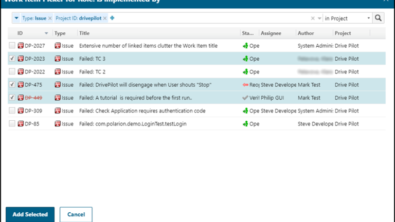Don’t Worry, Human Jobs Are Safe From Robots… For Now
Could you imagine sitting in the back of a taxi cab and there is no human driver in control of the vehicle? How about going on vacation and no longer being required to interact with hotel staff while checking-in at the hotel? Just a few years ago, either one of these scenarios would have seemed highly unlikely, but technology is changing at a rapid pace.
Robots and artificial intelligence have captured even more headlines as of late, and that has caused a growing number of people to be concerned. Some are worried about artificial intelligence surpassing human control, while others have economic-based fear that robots will steal jobs.
Pundits’ Predictions
It is expected that global IT robotic automation will increase from an estimated $0.183 billion in 2013 up to $4.98 billion by 2020, as the market receives an impressive 60.5% compound annual growth rate (CAGR) during that five-year period, according to Transparency Market Research.
As automation becomes more engrained in our lives, and the cost of products hopefully drops because of it, consumers will have more disposable income to spend – boosting the economy and creating new jobs. Critics can continue to have an anti-robot stance, but that won’t stop the trend that has steadily increased over the past decade.
Here is what economists from the Deloitte management consulting firm said in a recent study:
“The dominant trend is of contracting employment in agriculture and manufacturing is being more than offset by rapid growth in the caring, creative, technology and business services sectors. Machines will take on more repetitive and laborious tasks, but seem no closer to eliminating the need for human labour than at any time in the last 150 years.”
However, the Boston Consulting Group believes up to 25 percent of jobs held by humans will be replaced by software or robots by 2025.
No crystal ball
Realistically, no one is really sure what to expect, as there are so many variables that cannot be so easily predicted, especially when R&D is advancing at a such a fast pace. Expect to read additional reports and see more experts discuss the topic on TV, but very few relevant facts are available about what to expect in the next 10 years.
Take what you will from this data – but if robots begin to take over jobs held by humans, it’ll be up to workers to diversify their skillsets to ensure they won’t be easily replaced by software and machines. After all, if humans aren’t employed, and don’t have money to purchase consumer goods, then what good will be robots manufacturing so many items?
But some things are clear
There are certain jobs that humans are more than happy to allow robots to augment, such as working in disaster areas and other situations too dangerous for us. For example, researchers used the High-Access Survey Robot from Honda Robotics inside the TEPCO Fukushima Power Station.
![Engineers working on the High-Access Survey Robot [Courtesy of: Honda]](http://community.plm.automation.siemens.com/legacyfs/online/siemensplm_blogs/2015/09/Honda.jpg)
Engineers working on the High-Access Survey Robot [Courtesy of: Honda]Operators were able to control the robot remotely, safely tucked away in a different facility with significantly lower radiation levels. TEPCO was able to provide input on the needs required for a device to head into the facility, so the robot accurately created a 3D display of the building, used a survey-performing robot arm, laser range finder, and camera to allow the job to be done in a safe, efficient manner.
Of course, many of us may be safe from a sudden robot revolution, but there are plenty of harsh learning lessons that we must be prepared to address.
Challenges Await
Deploying these types of technologies into restaurants, hotels, factories, and elsewhere is no easy task. There are steep immediate costs that include everything from purchasing, customizing, and deploying robots to regulatory issues and maintenance costs that must be continually handled.
Just like many aspects of day-to-day business, there are pros and cons that must be accurately discussed in the workplace.
Robotic automation is already occurring in factories, industrial facilities, and other large-scale operations today, and it’s not going to stop. Instead, expect to see some type of automation software and robotic technology in small- and mid-sized businesses sooner rather than later. It’s just a matter of how the emerging solutions are implemented, and what techniques humans can do to help themselves.


